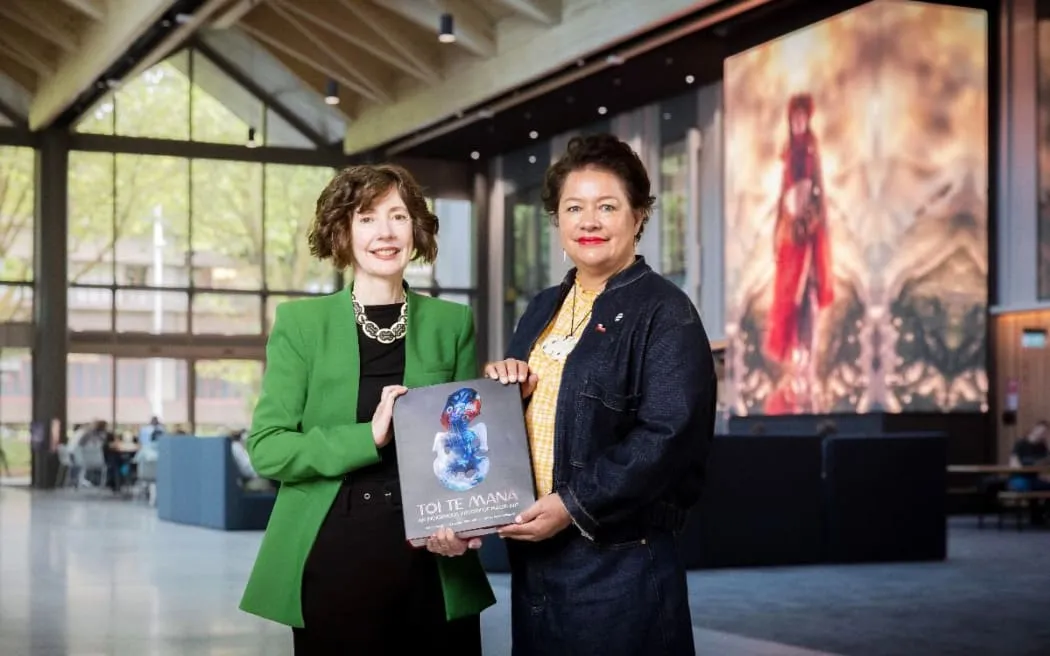RNZ’s Culture 101: Māori Art History – A New Framework
Māori art history has long been a topic of interest, but it has often been overlooked or marginalized. In recent years, there has been a growing recognition of the importance of understanding and appreciating Māori art and culture.
The first book in this series, which explores Māori art from 1800 to 1945, was well-received by critics and audiences alike. However, the authors of the new book are taking it further, creating a comprehensive framework that encompasses the entire history of Māori art.
“We actually spent more than a year thinking about how it would be structured,” says Deidre Brown, one of the authors. “We reached back into tikanga Māori – Māori customs – and came up with the idea of ngā kete mātauranga, the idea of the three baskets of knowledge.”
The new book is organized around these three baskets: te kete-tuatea, te kete-tuauri, and te kete-aronui. The first basket covers customary Māori art, including waka construction, textiles, whakairo rākau, wood carving, rock art, and body adornment.
“The first, te kete-tuatea – the basket of light, which Brown said “might be termed customary Māori art.”” This section highlights the importance of understanding Māori customs and practices in creating this type of art. The authors also explore how these arts continue to be practiced today.
The second basket focuses on what happened when new materials, new ideas, new concepts, and perhaps new challenges for Māori arrived via European culture. For example, taonga Māori in museums, the impact of Christianity on Māori art, new ideas, new technology, the arts of survival, so-called morahu arts and architecture.
“This is what we wanted to ensure that our readers understood that there were customs of art that continued and traditions of art that continued,” says Brown. “So we have a chapter on the art of utu, so forms of exchange, tuku, and also koha, and the role that art played within maintaining cultural practices.”
The third basket covers what might be termed a contemporary phase. The authors look at the role of people like Te Puea Hērangi, Sir Āpirana Ngata, Tahupōtiki Wiremu Rātana, and how they saw art and architecture as a way of social reform but really self-determination within the culture.
The book also covers the impact of modernism on Māori art and the current state of contemporary Māori fashion.
MP Whetū Tirikātene-Sullivan was a leader in contemporary Māori fashion. Here outside Parliament in 1975, receiving Whina Cooper’s hīkoi.
John Miller Photo
The authors say that their book aims to provide a comprehensive and accessible introduction to the history of Māori art, highlighting the complexities and nuances of this rich cultural heritage.
“By taking this approach, we hope to empower our readers with a deeper understanding of the historical and contemporary contexts that have shaped Māori art,” says Brown. “Ultimately, our goal is to inspire a new generation of artists, designers, and curators who are committed to preserving and promoting Māori culture.”

0 Comments